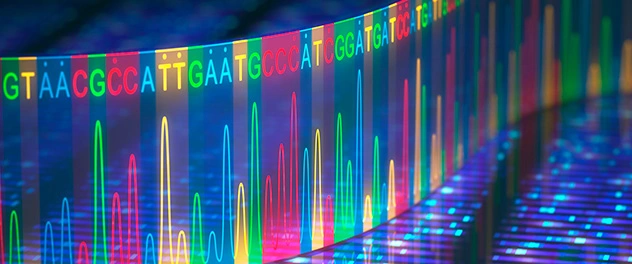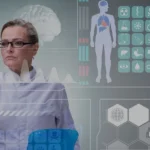In the vast landscape of biology, every organism holds within its DNA a wealth of information waiting to be unlocked. Genomics, the study of this genetic code, has undergone a remarkable revolution thanks to the emergence of big data. By collecting, analyzing, and interpreting vast amounts of genetic information, big data genomics opens doors to new discoveries and innovations in understanding organisms and their biology.
In this article, we’ll explore what big data genomics is and how it’s shaping the future of biology.
What is Big Data Genomics?
Big data genomics is akin to possessing an immense library stocked with volumes containing the blueprints of life. It encompasses the collection, management, analysis, and interpretation of extensive genetic information from various organisms.
The Three V’s of Big Data Genomics

Volume:
Imagine countless volumes stacked high, each containing the intricate instructions for life. This represents the sheer volume of data in big data genomics, comprising billions of DNA sequences across diverse species.
Velocity:
Much like a speeding train, data in genomics rushes in swiftly from multiple sources such as DNA sequencers, research studies, and patient records, demanding rapid processing and analysis.
Variety:
Genomic data comes in diverse forms, from raw DNA sequences to associated metadata encompassing patient demographics, environmental factors, and clinical information, adding layers of complexity to its analysis.
Why Big Data Matters in Genomics?
Precision Medicine:
By harnessing big data genomics, healthcare professionals can tailor medical interventions to individual patients based on their unique genetic makeup, leading to more personalized and effective treatments.
Advancements in Biological Computation:
Big data genomics fuels advancements in biological computation, enabling researchers to uncover hidden patterns, relationships, and biological insights that drive innovation in healthcare.
Disease Understanding:
Big data genomics is helping scientists understand the genetic causes of diseases like cancer, diabetes, and Alzheimer’s. By studying the DNA of patients, researchers can identify genetic mutations that increase the risk of disease, leading to better prevention and treatment strategies in the world of data-driven healthcare.
Evolutionary Insights:
By analyzing the genetic code of different species, scientists can uncover the evolutionary relationships between organisms. This helps us understand how life has evolved over millions of years and how species are interconnected.

What is the role of Big Data Analytics in Genomics?
Big data analytics in genomics encompasses the collection, processing, analysis, and interpretation of vast amounts of genetic data to glean insights into biological processes, disease mechanisms, and evolutionary dynamics.
What are the Key Components of Big Data Analytics in Genomics?
1. Data Integration:
Integrating multi-omics data streams, including genomics, transcriptomics, proteomics, and metabolomics, allows for a comprehensive understanding of biological systems and disease processes.
2. Machine Learning and AI:
Advanced machine learning algorithms and artificial intelligence techniques are employed to analyze genomic data, predict disease risk, and uncover complex gene-environment interactions.
3. High-Performance Computing:
Big data analytics in genomics relies on high-performance computing infrastructure to process and analyze large-scale genomic datasets efficiently.
What are the Challenges in Big Data Genomics?
1. Data Storage and Management:
Managing the vast volumes of genomic data necessitates robust infrastructure and efficient algorithms to ensure accessibility, scalability, and data integrity.
2. Data Quality and Standardization:
Ensuring the accuracy, consistency, and standardization of genomic data poses significant challenges, requiring meticulous quality control measures and adherence to standardized protocols.
3. Ethical Considerations:
Big data genomics raises ethical concerns surrounding data privacy, consent, and equitable access, underscoring the need for robust ethical frameworks and governance mechanisms.
4. Interdisciplinary Collaboration:
Collaborative efforts between biologists, data scientists, clinicians, and policymakers are essential to harness the full potential of big data analytics in genomics and translate insights into clinical practice and public health initiatives.

Big Data Genomics Future Directions
Technological Innovations:
Continued advancements in sequencing technologies, computational algorithms, and cloud computing will drive transformative breakthroughs in big data genomics, unlocking new frontiers in healthcare and biological computation.
Interdisciplinary Collaboration:
Collaborative efforts between biologists, data scientists, healthcare professionals, and policymakers will foster synergies and innovation, accelerating the translation of big data genomics into clinical practice and public health initiatives.
Education and Training:
Investing in education and training programs that bridge the gap between biology and data science will cultivate a skilled workforce capable of harnessing the full potential of big data genomics to address pressing healthcare challenges and drive scientific discovery.
Conclusion
Big data genomics is transforming biology as we know it. By unlocking the secrets hidden within the genetic code, scientists are paving the way for a future where healthcare is personalized, diseases are better understood, and the story of life on earth is unraveled like never before. As we continue to explore the potential of big data genomics, the possibilities for innovation and discovery are endless.



